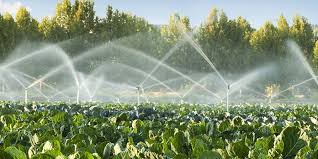Better policies to improve the environmental performance of the agriculture sector
A key challenge for the agriculture sector is to feed an increasing global population, while at the same time reducing the environmental impact and preserving natural resources for future generations.
Agriculture can have significant impacts on the environment. While negative impacts are serious, and can include pollution and degradation of soil, water, and air, agriculture can also positively impact the environment, for instance by trapping greenhouse gases within crops and soils, or mitigating flood risks through the adoption of certain farming practices.
The OECD monitors the linkages between the environment and agriculture, identifies successful agricultural policies that mitigate the negative environmental impacts while enhancing the positive ones, and provides recommendations to improve policy coherence for environmental performance of the agricultural sector.
Agriculture’s impact on the environment has improved, but there is still much to do
In recent years, there have been some encouraging signs that the agriculture sector of OECD countries is capable of meeting its environmental challenges. In particular, farmers in many OECD countries have made improvements in the use and management of nutrients, pesticides, energy and water, using less of these inputs per unit of land. Farmers have also made good progress in adopting more environmentally beneficial practices, such as conservation tillage, improved manure storage, or soil nutrient testing.
Notwithstanding these improvements, there is still more to do, with an important role for policymakers. Nitrogen balances are increasing in several OECD countries, farmland bird populations continue to decline and the sector’s contribution to water use and contamination is still high relative to other uses. To address these long-standing issues, more effort and co-operation is needed between farmers, policymakers, and the agro-food value chain.
In addition, the twin policy challenge of ensuring global food security for a growing population while improving environmental performance will require raising the environmental and resource productivity of agriculture, enhancing land management practices, minimising pollution discharges, curtailing damage to biodiversity, and strengthening policies that avoid the use of production and input subsidies which tend to damage the environment.

Monitoring and evaluating agriculture’s environmental performance can help guide future policy choices
To help countries improve the sustainability of agriculture, the OECD has developed recommendations on how to develop cost-effective agri-environmental policies , how to manage water issues for agriculture, how to deal with climate change challenges, and how to preserve biodiversity and manage ecosystem services related to agriculture. We have also developed insights on the potential environmental impact of agriculture policies by identifying possible policy mis-alignments and how to jointly address sustainability and productivity growth goals.
While there is unlikely to be a “one-size-fits-all” solution for dealing with environmental concerns in agriculture, as agro-ecological conditions and public preferences differ across countries, policymakers must have at their disposal a deep understanding of, and capacity to measure, the linkages between policies and outcomes in order to evaluate and achieve better environmental outcomes in a cost-effective manner.
To support this work and help governments assess whether the policies they have in place are most likely to boost productivity and minimise environmental damage, the OECD developed a set of agri-environmental indicators (AEIs) More specifically, the AEI database can be used to:
- provide a snapshot of the current state and trends of environmental conditions in agriculture that may require policy responses;
- highlight where new environmental challenges are emerging;
- compare trends in performance across time and between countries, especially to assist policy makers in meeting environmental targets, threshold levels and standards where they have been established by governments or international agreements; and
- monitor and evaluate agriculture policies; and
- project future trends.
OECD




















